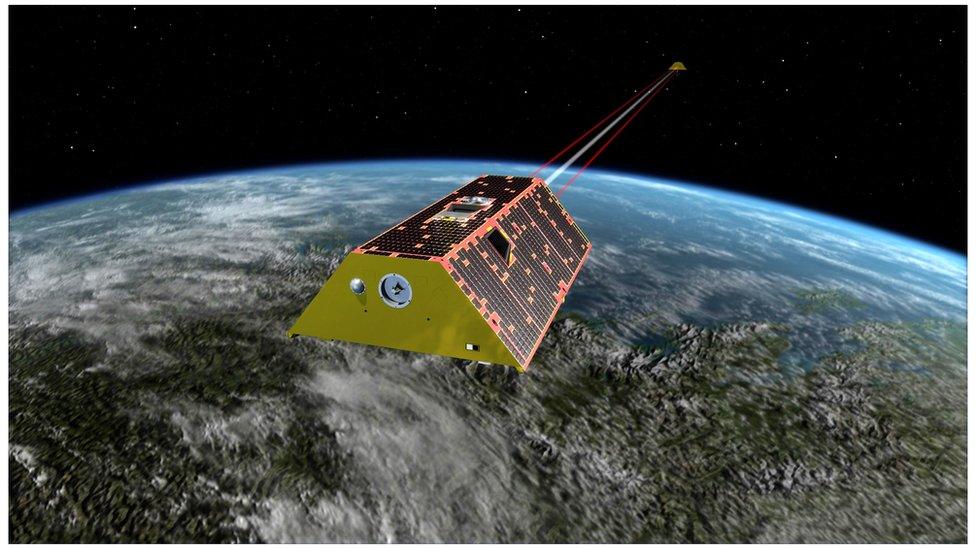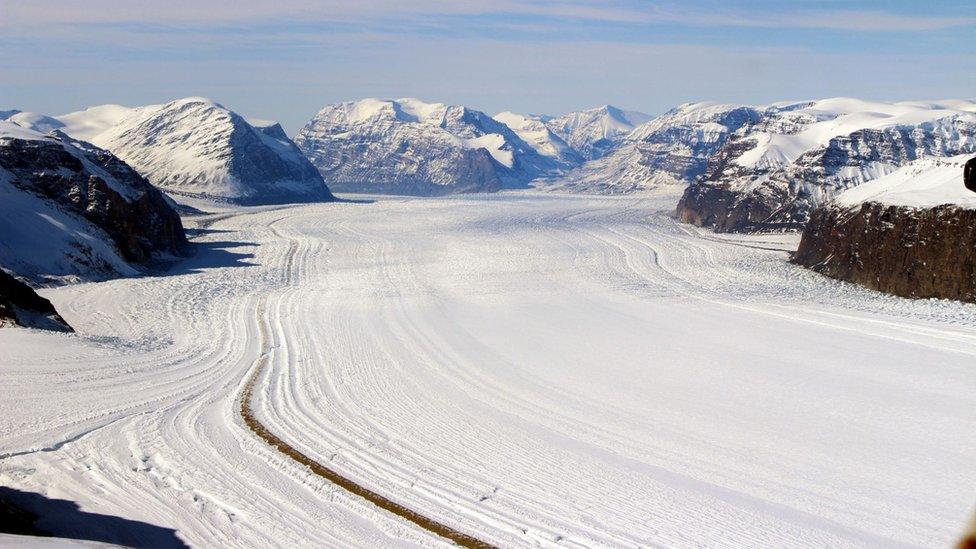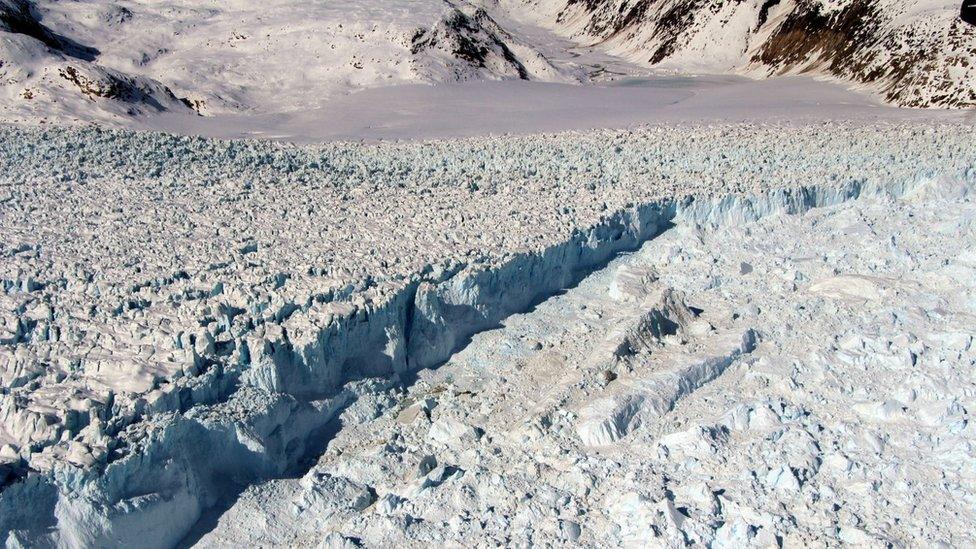Grace gravity mission captures Greenland ice loss
- Published

Artwork: The Grace satellites measure the "lumps and bumps" in Earth's gravity
Greenland shed an extraordinary 600 billion tonnes of ice by the end of summer last year.
This melt-driven loss would have raised global sea levels by 2.2mm, say scientists who've just published an analysis of satellite gravity measurements taken over the Arctic.
Of course, when winter set in, some of that mass would have been recovered as it snowed across the ice sheet.
The data comes from the joint US-German space mission known as Grace-FO, external.
It's actually a pair of satellites that circle the globe, sensing the "lumps and bumps" in Earth's gravity field that correspond to variations in mass.
Key signals being detected are changes in the amount of water stored on land surfaces and the withering state of the planet's great ice fields.
FO stands for "follow on" because the project is a successor to a mission that flew from 2002 to 2017.
The analysis appearing in the journal Geophysical Research Letters (GRL), external on Wednesday is essentially a first attempt to match up the new observational tool with the old.
It's a task that was made more challenging than it should have been, concede scientists.
In part that was because there was a seven-month gap in operations (Grace-FO wasn't launched until 2018), but also because the new mission, once in orbit, was found to be carrying an underperforming accelerometer instrument.
The team has had to find a work-around for this disappointment.
"But the exciting news is we are working and we are working well. And that's important because Grace gives us a really unique way of looking at the ice sheets and their glaciers," Prof Isabella Velicogna, from the University of California at Irvine and the US space agency's (Nasa) Jet Propulsion Laboratory, told BBC News.

Umiamako Glacier enters the ocean in the west of Greenland

Other types of satellite measure the ice sheets by capturing changes in velocity or shape. Grace, on the other hand, literally weighs the ice from orbit. It's therefore an independent check on those other satellites' methods.
The big take-home from the GRL paper is that the new gravity mission is capturing all major trends.
The Greenland melt of last summer would have been hard to miss. It was extreme. On a par with the very warm summer of 2012.
In the coastal town of Ilulissat, not far from where the mighty Jakobshavn Glacier enters the ocean, temperatures reached into the high 20s Celsius.
And even in the ice sheet's interior, at its highest point, temperatures got to about zero.
"It's significant that we're now seeing melt and mass loss extending to Greenland's northern glaciers. All of Greenland contributed to the big summer melt of last year," said Prof Velicogna.
Across the entire period of the two missions - 2002 to 2019 - Greenland has lost some 4,550 billion tonnes of ice, an average of 268 billion tonnes annually, which puts the scale of last summer into further context.
In Antarctica, for the full Grace period, the ice sheet is seen to be losing just over 100 billion tonnes every year. The match-up between the old and new gravity measurements is not quite as consistent as in Greenland, but this should improve with time, commented Prof Andrew Shepherd from Leeds University, UK.
"This is the first effort to cross-calibrate the missions which is really welcome because the Grace gravity data is important for our science. That's a massive positive. No-one expects a first paper, the first data from a mission, to be perfect; the processing of the data can only get better," he told BBC News.

Helheim Glacier in Greenland: Ice streams all around Greenland have been losing mass
Jonathan.Amos-INTERNET@bbc.co.uk, external and follow me on Twitter: @BBCAmos, external